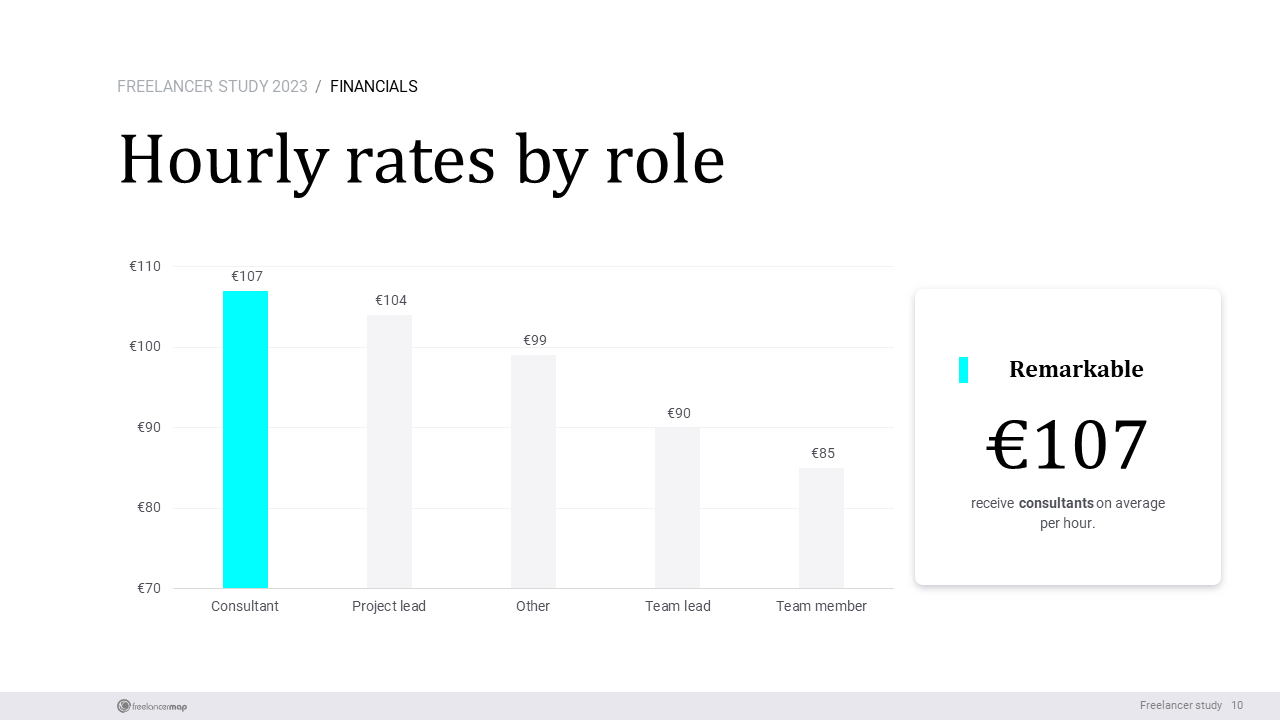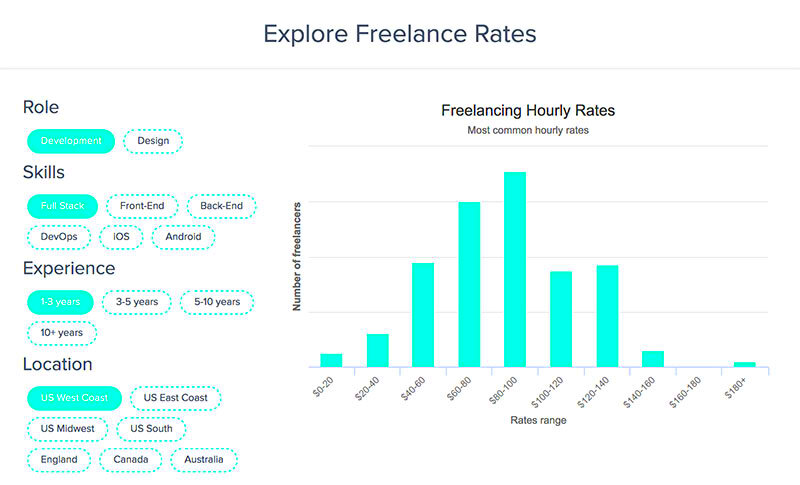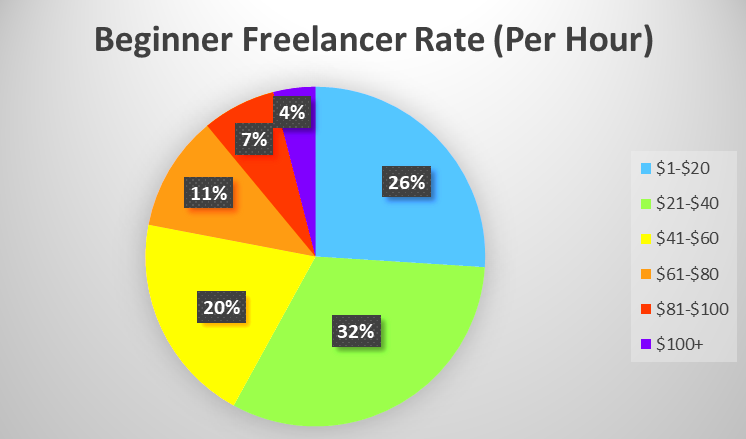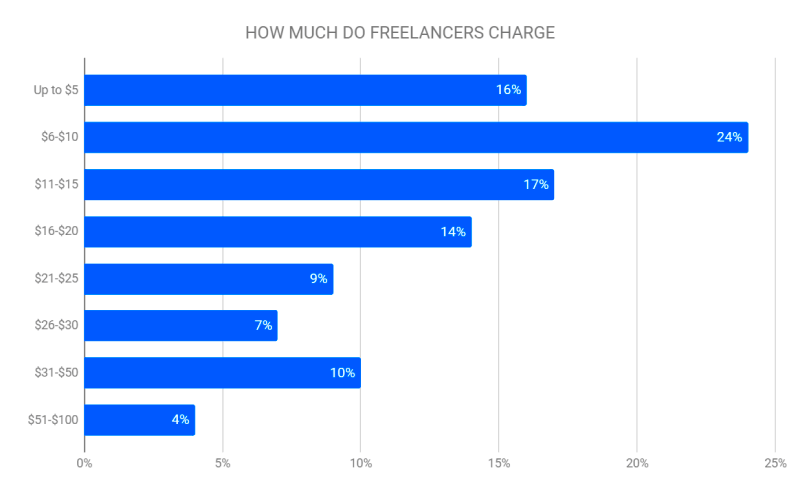Freelancing offers flexibility and independence, but one of the biggest challenges freelancers face is setting their rates. Understanding freelance rates is essential for both new and experienced freelancers. It involves knowing how much to charge for your skills, experience, and the value you bring to your clients.
Freelancers can charge on an hourly basis or per project. The choice depends on the nature of the work, the client’s needs, and the freelancer's preference. When you understand freelance rates, you can position yourself better in the market and ensure that you are compensated fairly for your efforts.
Factors That Influence Hourly Rates

Several factors come into play when determining how much freelancers charge per hour. Here are some key considerations:
- Experience Level: More experienced freelancers typically charge higher rates. Their skills and past projects add value to their services.
- Industry Demand: Some industries have higher demand for freelancers, which can drive up rates. For example, tech and design fields often see higher hourly charges.
- Project Complexity: Complex projects that require specialized knowledge usually warrant higher fees.
- Client Budget: Understanding the budget of potential clients can help freelancers set their rates competitively.
- Geographic Location: Rates can vary based on the freelancer's location and the client’s location, reflecting the cost of living and market standards.
Also Read This: How to Find and Get Part Time Remote Jobs in USA
Average Hourly Rates for Different Freelance Fields

Hourly rates can vary significantly across different freelance fields. Here’s a breakdown of average rates by industry:
| Freelance Field | Average Hourly Rate |
|---|---|
| Graphic Design | $30 - $150 |
| Web Development | $40 - $200 |
| Writing and Editing | $20 - $100 |
| Marketing | $25 - $150 |
| Consulting | $50 - $300 |
These ranges represent typical rates but can vary based on factors mentioned earlier. Freelancers should research their specific market to determine competitive pricing.
Also Read This: Can You Be a Fiverr Affiliate? A Comprehensive Guide
How Experience Affects Freelance Charges

Experience plays a vital role in determining how much freelancers charge for their services. Generally, the more experience a freelancer has, the higher their rates can be. This is because experienced freelancers bring a wealth of knowledge and skills that can lead to better results for clients.
Here’s how experience impacts freelance charges:
- Skill Development: Over time, freelancers refine their skills, allowing them to tackle complex projects more efficiently. This proficiency often justifies higher rates.
- Portfolio Growth: With experience comes a stronger portfolio. A well-curated portfolio showcases past work and successful projects, attracting clients willing to pay more.
- Client Relationships: Experienced freelancers often have established relationships with clients, leading to repeat business. Clients are more likely to invest in someone they trust.
- Market Reputation: A good reputation built over years can command higher rates. Freelancers known for quality work can position themselves as premium service providers.
Ultimately, while newcomers may start at lower rates to build a client base, it’s essential to gradually increase charges as skills and experience grow. This approach ensures fair compensation for the freelancer’s value.
Also Read This: How Does Fiverr Pay in India?
Setting Your Own Hourly Rate as a Freelancer

Setting your own hourly rate as a freelancer is a crucial step in establishing your business. It requires careful consideration of various factors to ensure you are charging what you are worth while remaining competitive. Here’s how to approach it:
- Assess Your Skills: Reflect on your skills, experience, and the unique value you provide. Understanding your worth helps in setting a realistic rate.
- Research Market Rates: Look at what others in your field are charging. Freelance platforms, industry reports, and professional groups can provide insights into current rates.
- Consider Your Expenses: Factor in your business costs, such as software, equipment, taxes, and healthcare. Your rate should cover these expenses and leave room for profit.
- Decide on a Pricing Structure: Choose between hourly rates, project-based pricing, or retainer agreements. Each has its pros and cons, depending on your work style and client needs.
Lastly, don’t be afraid to adjust your rates as you gain more experience and expand your skills. Regularly evaluating your pricing will help you stay competitive in the market.
Also Read This: Why Does Fiverr Want My Phone Number?
Tips for Negotiating Your Rate
Negotiating your rate can be daunting, but it's an essential skill for freelancers. Here are some tips to help you approach negotiations confidently and effectively:
- Know Your Worth: Understand the value you bring to the table. Be prepared to explain how your skills and experience will benefit the client.
- Be Clear About Your Rates: When discussing your rates, be direct and confident. Clearly state your hourly or project rate to avoid misunderstandings.
- Listen Actively: Pay attention to the client’s needs and concerns. This can help you address any objections and find common ground during negotiations.
- Be Flexible: While you should stand firm on your value, be open to negotiations. Consider offering package deals or discounts for long-term projects.
- Practice Good Communication: Use clear and professional language. Maintain a positive tone to foster a collaborative atmosphere.
Negotiating your rates may take time, but with practice and confidence, you can ensure you’re compensated fairly for your hard work.
Also Read This: An Easy Guide to Understanding Fiverr Percentage Fees
Tools to Help Track Your Time and Earnings
As a freelancer, managing your time and tracking your earnings are essential tasks that can significantly impact your productivity and financial success. Fortunately, there are various tools available that can simplify these processes, allowing you to focus more on your work and less on administration. Here are some popular tools to consider:
- Toggl: This user-friendly time tracking tool allows you to track how much time you spend on different projects. It offers detailed reports to help you analyze your productivity.
- Harvest: Harvest not only tracks time but also integrates invoicing and expense tracking. This tool is great for freelancers who want to keep everything in one place.
- Clockify: A free time tracking tool that offers unlimited tracking for projects. It's perfect for freelancers just starting out and looking to monitor their time without additional costs.
- FreshBooks: A complete accounting solution designed for freelancers and small businesses. It helps you track time, create invoices, and manage expenses all in one platform.
- QuickBooks: This popular accounting software offers comprehensive features for tracking income and expenses, making it easier to prepare for tax season.
Choosing the right tool depends on your specific needs. Many of these options offer free trials, so you can find the one that works best for you.
Also Read This: How to Create a Logo Design Gig on Fiverr
Frequently Asked Questions
When it comes to freelance rates, many questions arise. Here are some common inquiries and their answers to help clarify this topic:
- What is the average hourly rate for freelancers? The average hourly rate varies widely by industry, ranging from $20 to over $200. Researching your specific field can provide more accurate insights.
- How do I know if my rates are competitive? Compare your rates to others in your field and location. Online platforms and freelancer forums can offer valuable information.
- Can I change my rates later? Yes, it’s common for freelancers to adjust their rates as they gain experience and improve their skills. Just be sure to communicate any changes to your clients.
- Should I charge more for rush jobs? Yes, many freelancers charge a premium for expedited work. This reflects the urgency and can help compensate for potential scheduling disruptions.
- How can I increase my rates without losing clients? Gradually increasing your rates while communicating your enhanced skills and value can help retain clients. Offering improved services can justify the change.
Conclusion
Understanding how much freelancers charge per hour is crucial for building a successful freelance career. By considering factors like experience, market trends, and the tools available for tracking time and earnings, you can set competitive rates that reflect your value. Remember to communicate clearly with clients and be open to negotiations, as this builds trust and fosters long-term working relationships.
As you navigate your freelance journey, keep evaluating your rates and the services you provide. The freelance landscape is dynamic, and staying informed will help you thrive in your chosen field. Embrace the freedom and flexibility freelancing offers while ensuring you are compensated fairly for your skills and expertise.




